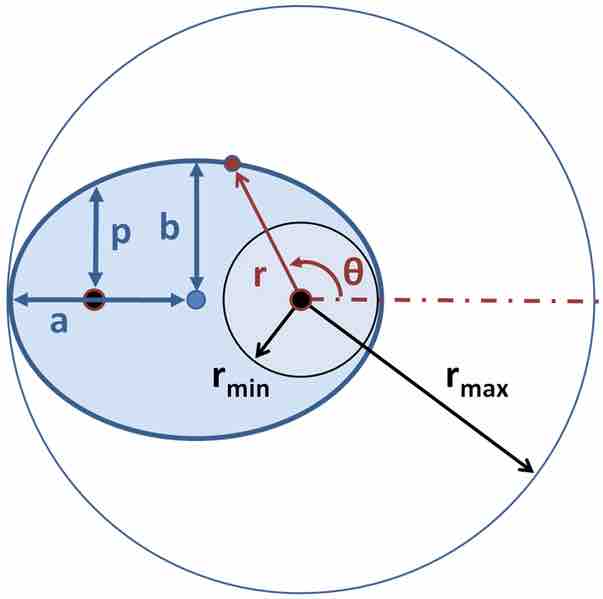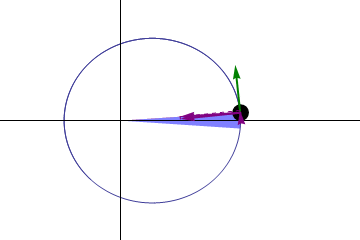Johannes Kepler describes planetary motion with three laws: 1. The orbit of every planet is in an elliptical shape, with the Sun being at one of the two foci of this ellipse, called the occupied focus; 2. If a line where to be drawn from the planet to the Sun, that line would sweep out an equal amount of area during equal intervals of time; 3. The square of the orbital period is proportional to the cube of the semi-major axis of the planet's orbit.
Kepler's First Law
As we already stated, the first law of planetary motion states that the orbit of every planet is an ellipse with the Sun at one focus. In order to discuss this law, and the laws that follow, we should examine the components of an ellipse a bit more closely.
The eccentricity of an ellipse tells you how stretched out the ellipse is. The eccentricity can be from 0 to 1. If the eccentricity is equal to zero, that means it is a circle. In Kepler's time, the extremes of planetary eccentricity were Venus, 0.007, and Mercury, 0.2. The eccentricity is what makes an ellipse different from a circle.
where
The semi-major axis,
The semi-minor axis,
The area of an ellipse is found as follows:

Ellipse
The important components of an ellipse are as follows: semi-major axis
Kepler's Second Law
The second law of planetary motion states that in an amount of time,
and the ratio of the area of this triangle to the time elapsed is:
As the planet moves closer to the Sun, it speeds up. This allows the triangle to have an equal area in an equal amount of time regardless of position of the planet. As we learned in the first section, the area of an ellipse is
where

The Second Law
Illustration of Kepler's second law. The planet moves faster near the Sun so that the same area is swept out in a given time as it would be at larger distances, where the planet moves more slowly. The green arrow represents the planet's velocity, and the purple arrows represent the force on the planet.
Kepler's Third Law
Kepler's third law describes the relationship between the distance of the planets from the Sun, and their orbits period.
where AU is an astronomical unit. In the case of a circular orbit, the proportionality constant is as follows:
where
How does Newton Relate to Kepler?
Newton derived his theory of the acceleration of a planet from Kepler's first and second laws. Newton theorized that the direction of a planet is always towards the Sun. In addition, the magnitude of the acceleration is inversely proportional to the square of its distance from the Sun. From this, Newton defined the force acting on a planet as the product of its mass and acceleration. Therefore, by Newton's law, every planet is attracted to the Sun, and the force acting on a planet is directly proportional to the mass and inversely proportional to the square of its distance from the Sun.